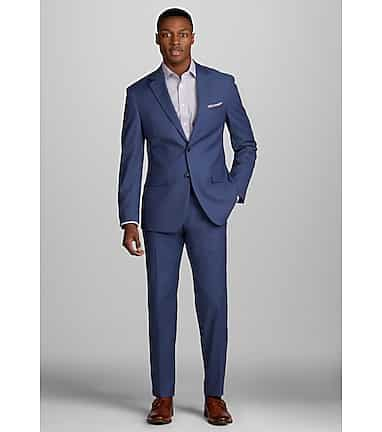Checking Out the Art of Tailoring: A Comprehensive Guide to Custom-made Clothes and Personal Design
The art of customizing transcends plain garments construction; it personifies a careful craft that harmonizes personal identity with sartorial elegance. As we discover these components, the concern continues to be: what genuinely defines a tailored item, and exactly how can one ensure their garments are not just trendy however likewise timeless?
The Basics of Tailoring
What specifies the essence of tailoring? At its core, tailoring is the careful craft of tailoring garments to improve fit, convenience, and design. This practice transcends simple clothes alteration, symbolizing a profound understanding of body forms and percentages. A proficient dressmaker uses exact measurements, making certain that each item is designed to match the private user.
The fundamentals of tailoring include a number of essential strategies. Precise dimension is extremely important; it offers as the structure for any kind of effective customizing project. Different body dimensions, such as breast, waist, and inseam, should be carefully tape-recorded to accomplish a remarkable fit.

Lastly, the ending up techniques-- such as sewing, pressing, and outlining-- are essential for accomplishing a polished appearance. These elements, when integrated, exemplify the creativity and accuracy that specifies the world of customizing, developing garments that are as practical as they are cosmetically pleasing.
Comprehending Fabrics and Textiles
A comprehensive understanding of materials and fabrics is essential for any type of dressmaker, as the choice of material considerably affects the last garment's fit, longevity, and general visual. Fabrics can be generally categorized into natural and synthetic fibers. All-natural fibers, such as cotton, woollen, linen, and silk, offer special homes like breathability, moisture-wicking, and comfort. Wool, for instance, is renowned for its insulation and durability, making it ideal for tailored suits and outerwear.
Alternatively, artificial fibers, consisting of polyester, nylon, and spandex, provide advantages such as raised durability, stretchability, and ease of maintenance. Blends of natural and artificial fibers usually incorporate the most effective features of both, causing functional and useful textiles suitable for numerous applications.
A lightweight textile might drape wonderfully but might not provide the structure required for tailored garments. Therefore, a dressmaker's expertise in fabrics and fabrics is essential in developing custom clothes that fulfills clients' expectations and enhances their individual style.
Picking the Right Tailor

Seek referrals from close friends, household, or on-line testimonials to evaluate the top quality of their work. Once you have a shortlist, visit the tailors personally. Observing their workshop can give insights right into their professionalism and focus to detail.
When getting in touch with prospective tailors, connect your demands clearly. An excellent tailor will listen diligently and ask relevant inquiries to understand your vision. Look for someone that demonstrates a passion for their craft and a determination to team up with you throughout the process.
Last but not least, do not forget the importance of pricing and turnaround time. While quality typically comes with a premium, ensure that their services fit within your budget. Ultimately, the best tailor will not just enhance your closet but also elevate your confidence in your personal style.
Personalizing Fit and Design
Attaining the perfect fit and style in tailored garments requires a thoughtful strategy that balances personal preferences with professional craftsmanship. Customizing fit begins with understanding one's body shape, proportions, and unique measurements. An experienced tailor imp source will perform a comprehensive suitable session, making note of areas such as shoulder width, waistline dimension, and sleeve length to create a silhouette that flatters the user.
Along with fit, design modification entails choosing style elements that mirror specific taste. This includes textile option, shade, and outlining such as lapels, buttons, and pocket designs. For instance, a timeless two-button sports jacket can be transformed with an unique material or contrasting sewing, enabling personal expression while maintaining elegance.
Cooperation between the user and dressmaker makes certain that both fit and style are effortlessly incorporated, resulting in a garment that improves self-confidence and showcases individual style. Eventually, customizing fit and style is concerning developing clothes that reverberates with the person while adhering to click the concepts great post to read of tailored elegance.
Preserving and Looking After Tailored Clothes
Correct maintenance and care of customized clothing are crucial for preserving the garment's fit, fabric, and overall appearance. To make certain long life, buy high quality storage space remedies. Constantly utilize padded wall mounts for jackets and suits to preserve their form, and store trousers flat or folded up to stop creasing.
Cleaning up tailored garments calls for careful consideration. When necessary, opt for dry cleaning, yet limitation this method to protect the fabric's natural fibers.
Regular inspection is critical; look for loose strings, switches, and any indications of wear. tailor tuxedos perth. Attending to these problems quickly can protect against extra substantial damage
Additionally, rotate your customized items to avoid overuse of a solitary garment. Consider seasonal storage space techniques, such as using breathable garment bags, to protect your tailored garments from dirt and pests during off-seasons.
Final Thought
In conclusion, the art of customizing includes a mix of technological ability and imaginative expression, making it possible for people to attain garments that mirror individual design and fit. Selecting an experienced tailor and maintaining customized clothing ensures longevity and proceeded contentment.